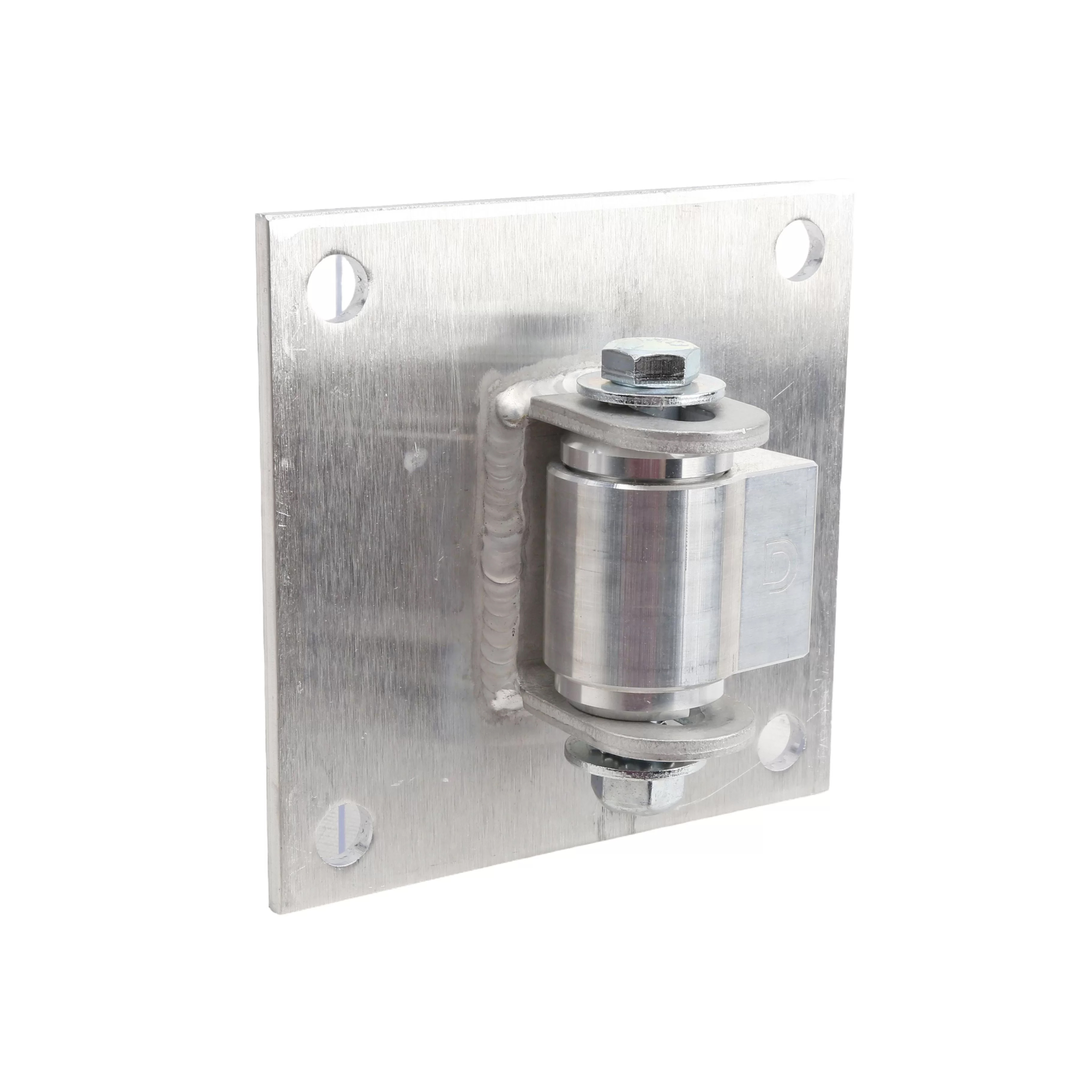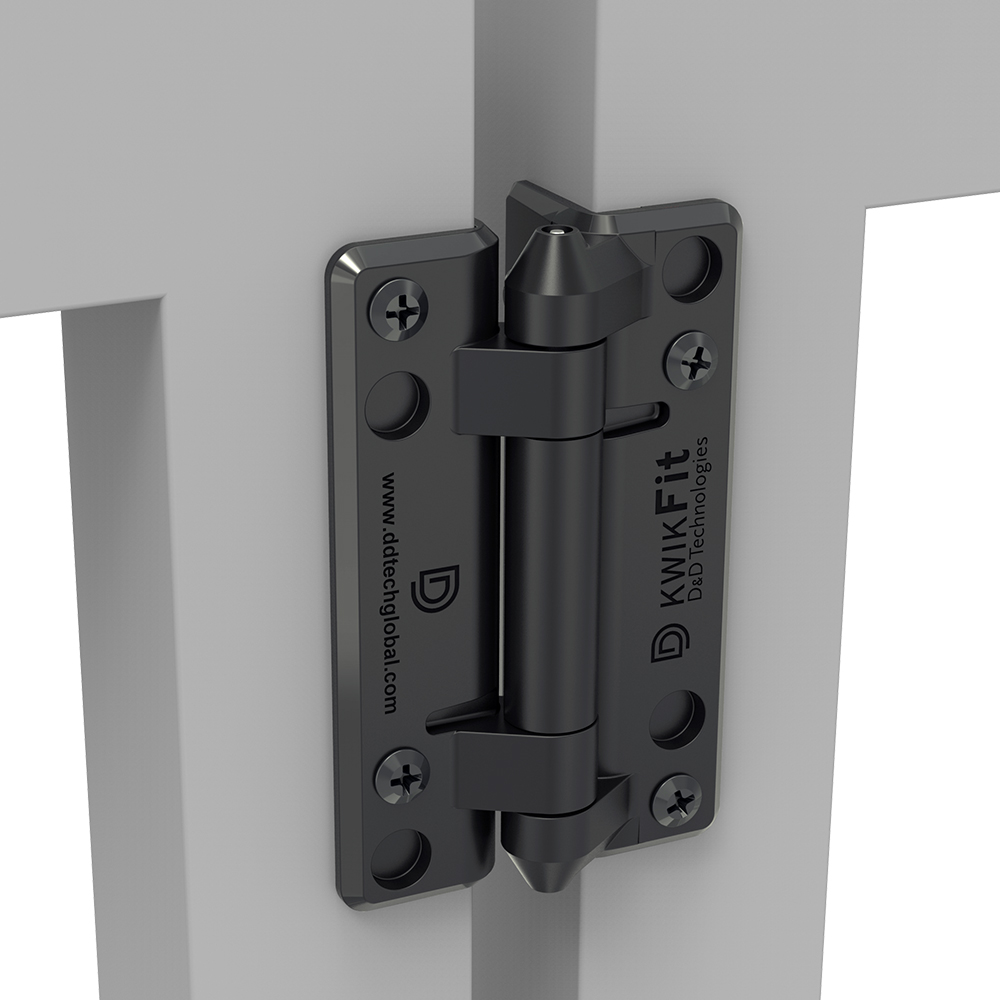Frequently Asked Questions About Gate Hardware

My Self-Closing Hinges Are Not Working And Will Not Close All The Way. Are They Defective?
- Did the welds have a chance to cool fully? When metal is heated, it can expand. This may cause the gaps between moving components to temporarily be too tight. This can cause the gate to stall while trying to close. Once the components cool you may find the gate closes as intended.
- Have you adjusted the tension to a higher level? The hinge is set at the lowest tension for shipping. Increasing the tension will help close a heavier gate.
- Were proper grounding procedures used during welding? If not done properly, the sealed bearings may have been damaged. Always ground the electrical current on the side you are welding on. Please see our Welding Tips at the
- If the fence post is round, was a bar channel welded to the yoke first? If not, it could be the two hinges are not in alignment and are working against each other.
- Are the level of the hinge (plumb) so that the gate is not swinging uphill? Make sure all surfaces on the gate and hinges are level.
- How many hinges are on the gate? We recommend only two per gate. One self-closing hinge and one non-self-closing hinge for gates up to 300 lbs (136kg). If three or more hinges were installed, then there could be misalignment and binding. This will prevent closing and will do damage to the bearings. If the gate weighs more than 300 lbs (136 kg), you may want to consider using two self-closing hinges. Never use more than two hinges per gate.
*The self-closing hinges swing a total of 115 degrees from -5⁰ to 110⁰. This helps to ensure the gate successfully latches and locks in case of installation anomalies or gate sag after installation. It is recommended to install an external gate stop at the 95⁰ open position to prevent the hinge from being damaged if the gate is slammed open. This could cause damage to the hinge preventing it from properly closing.
Does A Lifetime Warranty Mean That The Product Will Last As Long As I Do?
No, the lifetime warranty only applies to the average life expectancy of the product, which is usually 15 to 20 years. This lifetime warranty applies to all components except sealed bearings, however, these do come with a 5-year warranty.
Will The Warranty Still Be Valid If The Product Is Modified Slightly To Make It Fit A Particular Application?
No. The warranty is voided whenever any of our products are modified. The only exception is when welding bar channel to the yoke to make it fit onto a round surface.
What Type Of Sealed Bearings Are Used?
Sealed radial ball bearings. They never need grease or maintenance. Unlike other hinges that require periodic greasing, sand and dirt won’t get inside your hinges ensuring long life and superior performance. Our 304 stainless steel hinge model comes with stainless-steel sealed bearings.
Why Won't The Nuts Fully Thread And Tighten Onto The Bolts? They Only Twist On Halfway. Are They Damaged?
No, they are not damaged. We use Stover-type lock-nuts on all products. These will only screw on by hand halfway until it hits the locking threads. Then finish tightening the nuts using a wrench. These threads of the Stover type lock-nut can be reused two to three times in case the nut needs to be removed after installation for some reason. Since the Stover type does not use a nylon insert, it can be powder coated without damaging its locking ability.
Should The Tension Adjustment Holes On Your Self-Closing Hinge Be Top Or Bottom?
Either way. As this hinge is designed to only open in one direction, the adjustment holes for the hinge will either be on the top or the bottom, depending on left or right-handed. The stop tab is there to make sure the hinge only opens in one direction a total of 110⁰. It is important to follow the directions provided. We recommend keeping the stop tabs facing the side that the gate does not open towards.
Do All Products Have A Zinc Electroplated Finish?
No. Aluminum, 304 Stainless Steel and Rusted Look hinge models are unfinished (including the aluminum carriage plates). All other products and components come with a Zinc Plate, Type III, Blue Chromate Coating. The zinc coating is very durable and is covered by the lifetime warranty, but still needs to be re-applied to any surface that has been welded.
Does The Zinc Plating Need To Be Removed Before Welding?
No, the zinc plating does not need to be removed in any way before welding. You will find the weld to be clean and without impurities, however you will need to re-apply the appropriate rust and corrosion protection after welding. None of our products use the hot-dipped galvanizing process in order to avoid zinc poisoning when welding. Be sure to follow standard welding guidelines though, including wearing appropriate eye, face and body protection.
Can I Powder Coat My Hinges?
Although the 450⁰F (232⁰C) oven temperature should not cause any problem with the steel/rubber seals on the bearings, the grease is not rated for such high temperatures. Shut It recommends removing the bearings prior to spraying the powder coat and placing in the oven. To disassemble the hinge, use a retaining ring tool to remove the c-clips top and bottom. Then spray powder coat only onto the visible surfaces of the other components. Do not allow the powder coat to get inside of the bore where the bearings are located as the bearings and other components may not press back in due to tight tolerances. If you do not remove the bearings before placing in the oven, you must re-grease the bearings afterwards.
What Is The Difference Between Load Rating Per Gate And Maximum Gate Weight?
All weight ratings are based upon two hinges or two wheels per gate. The Load Rating relates to actual weight of the gate plus added loads such as people climbing on the gate, wind and other temporary load factors while the gate is opening or closing. The Maximum Gate Weight (MGW) is the weight of the actual gate itself without any temporary load factors or movement. It is an estimate based on our Load Rating of what we believe to be most common installation environment. If the hinge model you are considering is rated lower than the actual weight of the gate, move up to a higher MGW rated hinge. If these ratings are not followed, we cannot guarantee the short or long term operation of the hinges and the lifetime warranty will be voided.
Contact Us
Have more questions? Our team at Gate Hardware Center is here to help! Whether you need product recommendations, installation guidance, or order support, we’re just a message away. Reach out via phone, email, or our online contact form, and we’ll get back to you as soon as possible. Get in touch today and let us help you find the perfect gate hardware solutions!
Contact Us
